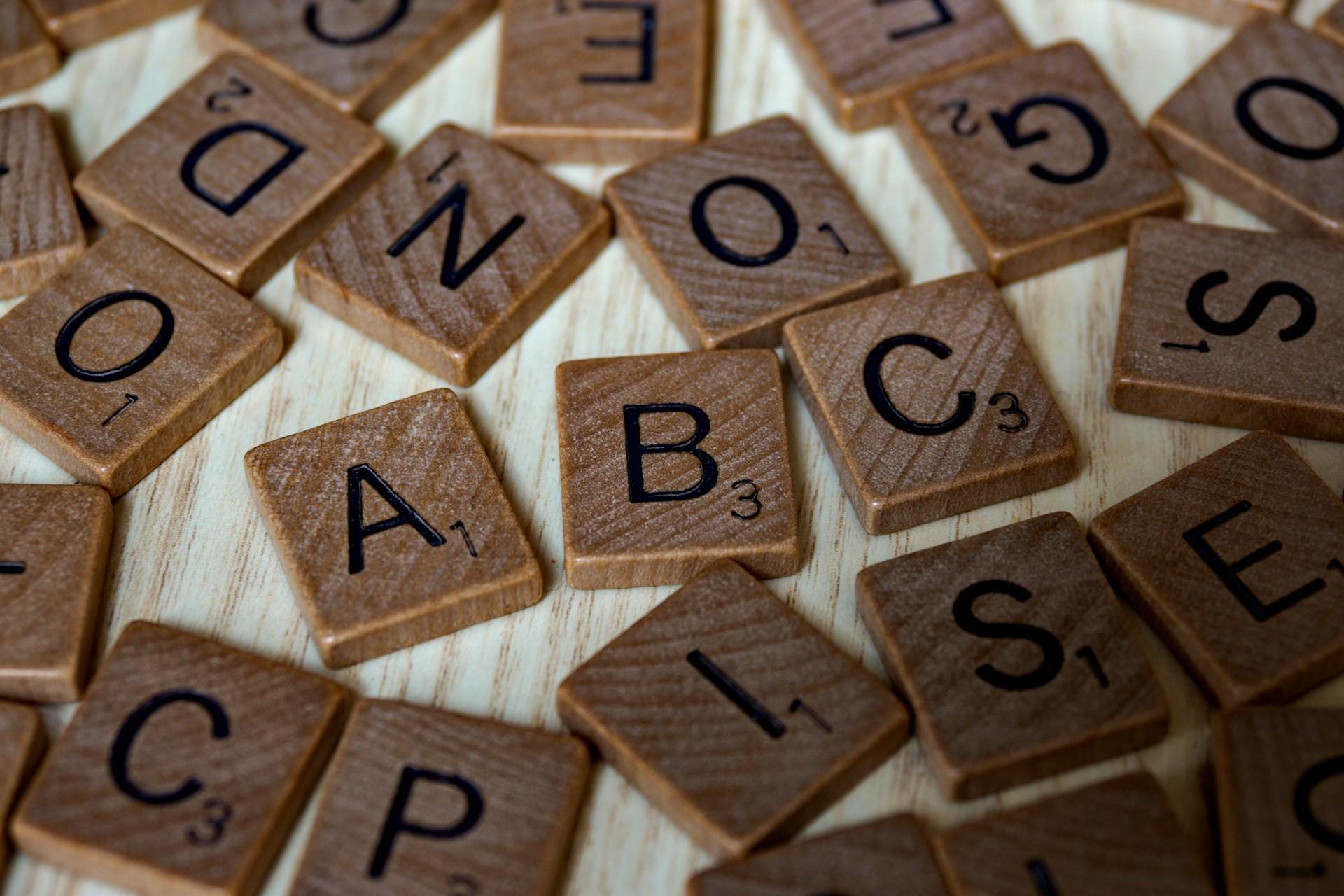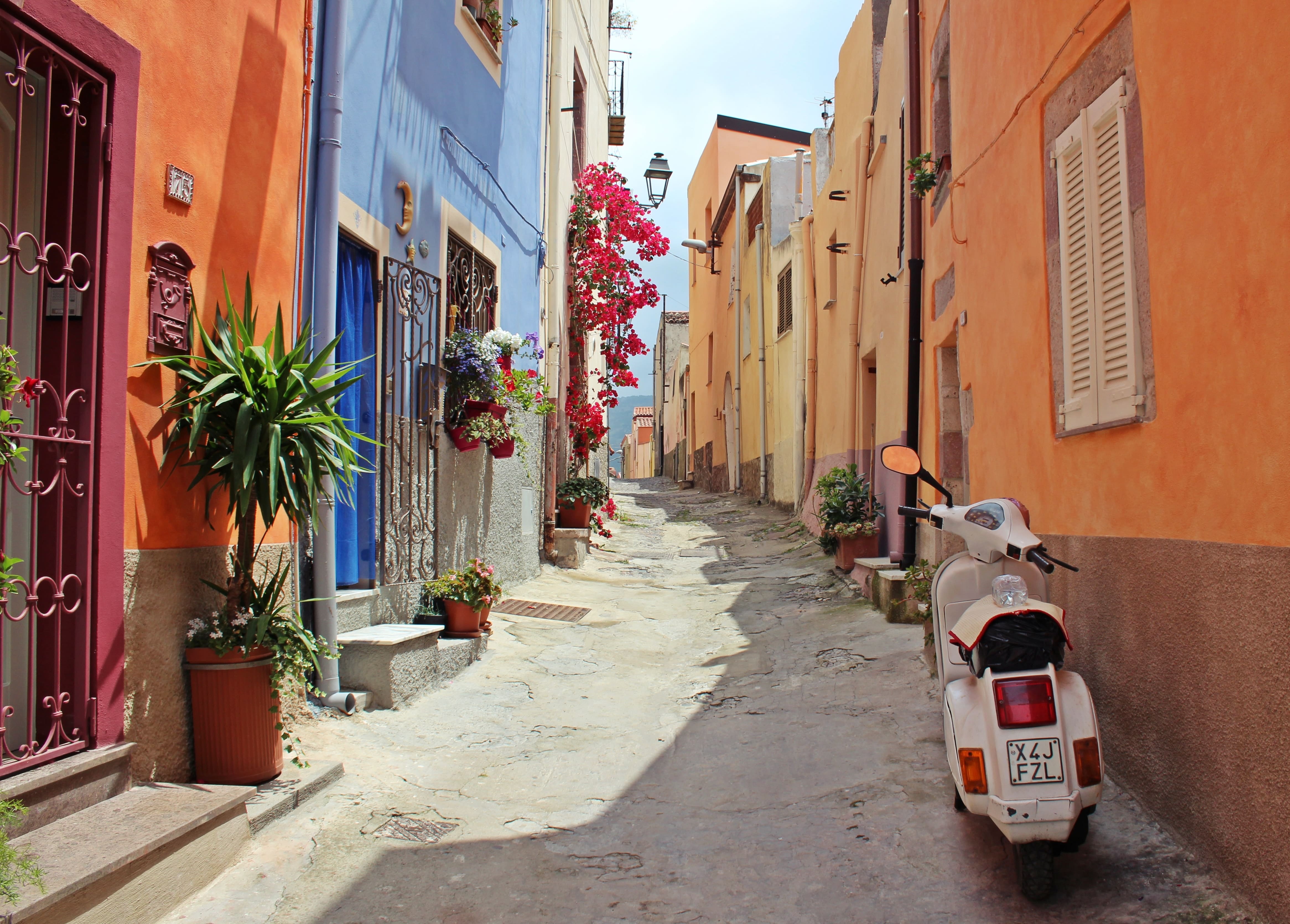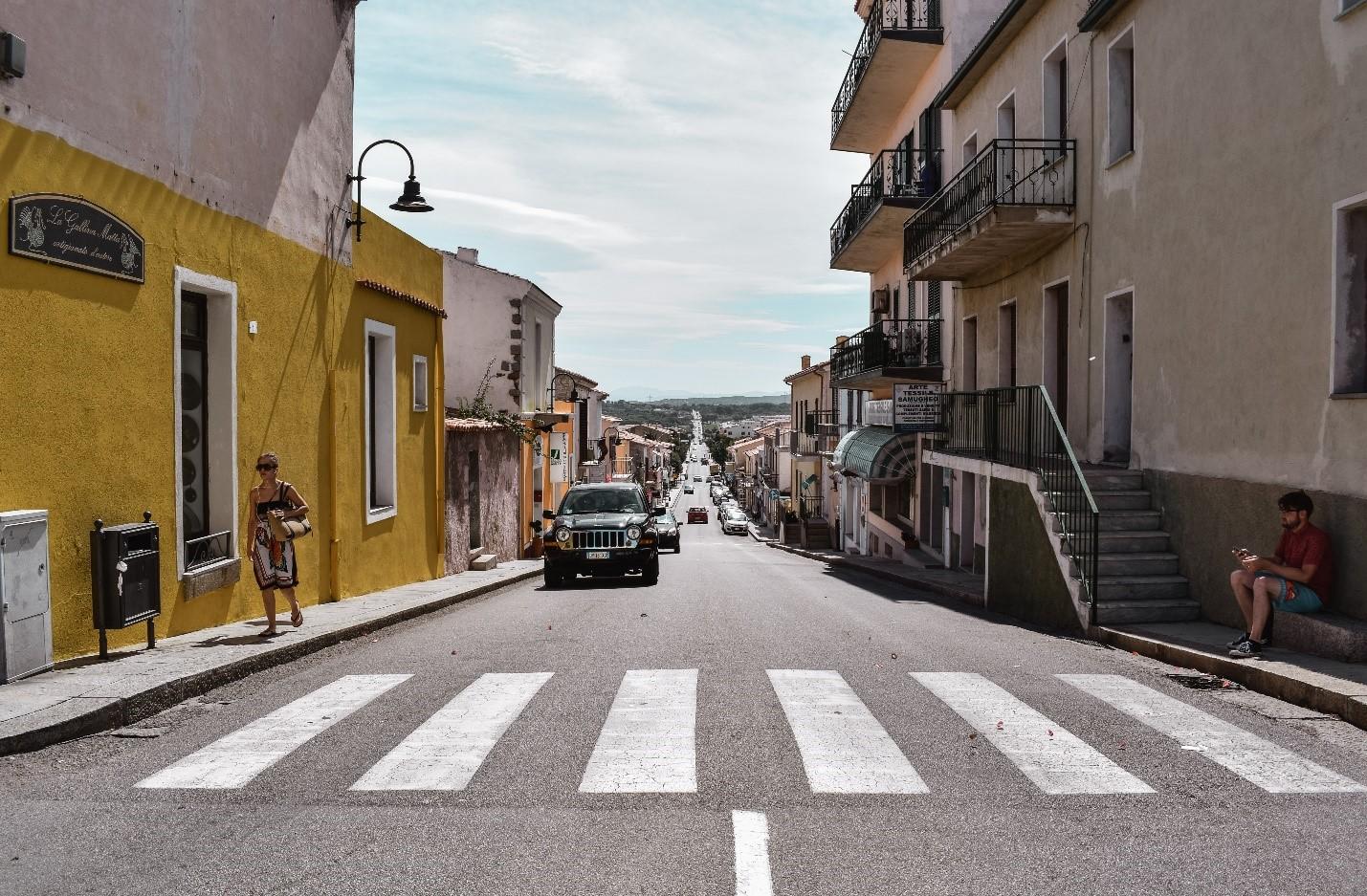Before you can start speaking any language, you need to know some words in the language, the fundamental grammar, and how to pronounce things in the language so that other speakers will understand you.
Here's everything you need to know to start speaking Italian.

The Italian Alphabet
An excellent place to start learning Italian is by learning the Italian alphabet.
You may already know that English uses the Latin alphabet. You may also know that the Italian language evolved from Latin. Luckily, this means that Italian uses the same writing system as English.
However, there are a few caveats here. For one, Italian only natively uses some of the letters that English uses. From the 26 letters found in the English language, the Italian alphabet doesn't use J, K, W, X, or Y.
This doesn't mean that you won't see these letters in Italian. Instead, they're used in loanwords or words originating in another language.
This means that in terms of vowels, Italian uses the same five vowels that we have in English: A, E, I, O, U. We don't have time for a debate on whether or not Y is a vowel (yes and no) so for the time being, you can accept that the vowels are the same in Italian as in English.
Why not start learning Italian by learning the alphabet, including the non-native letters?
Here they all are with their names.
| Letter | Name | Pronunciation (English Equivalents) | Pronunciation (IPA) |
|---|---|---|---|
| J | i lunga | ee loong-gah | /i ˈlun.ɡa/ |
| K | kappa | kahp-pah | /ˈkap.pa/ |
| W | vu doppia or vi doppia | voo dohp-pyah or vee dohp-pyah | /ˈvu ˈdɔp.pja/ or /ˈvi ˈdɔp.pja/ |
| X | ics | eeks | /iks/ |
| Y | ipsilon or i greca | eep-see-lon or ee gray-cah | /ˈip.si.lon/ or /i ˈɡre.ka/ |
After that, you should learn how the letters in Italian are usually pronounced. This will help you to immediately pronounce any new word that you see.
The alphabet is also helpful as Italian speakers can spell names and new words to you using their alphabet.
Discover Italian classes Sydney here on Superprof!

Numbers in Italian
After you've mastered your A, B, Cs in Italian, you can move on to your 1, 2, 3s. We've heard that one's as easy as the other.
Numbers are not just a part of language learning, they are a key to practical communication. Mastering Italian numbers will empower you to ask for quantities in shops, understand menus in restaurants, and comprehend addresses, distances, and telephone numbers. This practical application of numbers in everyday life should motivate you to learn them with enthusiasm.
Unlike other types of vocabulary, there's an obvious order to learning numbers. If we start with zero (which is zero in Italian), then you can go from one to ten quite easily:
| Number | English | Italian |
|---|---|---|
| 1 | One | Uno |
| 2 | Two | Due |
| 3 | Three | Tre |
| 4 | Four | Quattro |
| 5 | Five | Cinque |
| 6 | Six | Sei |
| 7 | Seven | Sette |
| 8 | Eight | Otto |
| 9 | Nine | Nove |
| 10 | Ten | Dieci |
Be sure to pay particular attention to the pronunciation of numbers with double consonants, such as the double "t" in quattro, sette, and otto.
Once you've learned the numbers from one to ten, eleven to twenty is your next challenge. Much like in English, these numbers are irregular.
| Number | English | Italian |
|---|---|---|
| 11 | Eleven | Undici |
| 12 | Twelve | Dodici |
| 13 | Thirteen | Tredici |
| 14 | Fourteen | Quattordici |
| 15 | Fifteen | Quindici |
| 16 | Sixteen | Sedici |
| 17 | Seventeen | Diciassette |
| 18 | Eighteen | Diciotto |
| 19 | Nineteen | Diciannove |
| 20 | Twenty | Venti |
After that, you can very quickly learn numbers up to the millions. Each of the tens follows a similar pattern with the structure "ten + unit", and after that, you can do "hundred + ten + unit", etc.
Some things will change depending on the letter in which each component part ends. For example, the word "venti" for twenty will drop the "i" if the unit begins with a vowel. However, once you reach the hundreds, the word "cento" won't drop the "o" if the following number starts in a vowel.
After that, you can move on to ordinal numbers, learning the Italian for "first," "second," "third," etc.

Days, Months, and Seasons in Italian
The next vocabulary you should learn is the Italian for days of the week and the months of the year.
Italy and Italian-speaking cultures follow the same calendar as English-speaking cultures, so there are seven days, twelve months, and four seasons.
The days in English are essentially Anglo-Saxon, Norse, or Germanic equivalents of those in Italian. For example, Italian days of the week are usually named after Roman deities, whereas the English words for the days of the week are named using Northern European mythology. Understanding these cultural references can deepen your understanding of the language.
| English | Etymology | Italian | Etymology |
|---|---|---|---|
| Monday | Old English: "Monandæg," named after the Moon | Lunedì | Latin: "Lunae dies," meaning "day of the Moon" |
| Tuesday | Old English: "Tiwesdæg," named after the Norse god Tyr/Mars | Martedì | Latin: "Martis dies," meaning "day of Mars" |
| Wednesday | Old English: "Wōdnesdæg," named after the Norse god Odin/Mercury | Mercoledì | Latin: "Mercurii dies," meaning "day of Mercury" |
| Thursday | Old English: "Þūnresdæg," named after the Norse god Thor/Jupiter | Giovedì | Latin: "Iovis dies," meaning "day of Jupiter" |
| Friday | Old English: "Frīgedæg," named after the Norse goddess Frigg/Venus | Venerdì | Latin: "Veneris dies," meaning "day of Venus" |
| Saturday | Old English: "Sæternesdæg," named after the Roman god Saturn | Sabato | Latin: "Sabbatum," via Hebrew "Shabbat" |
| Sunday | Old English: "Sunandæg," named after the Sun | Domenica | Latin: "Dies Dominica," meaning "day of the Lord" |
The months are much more similar across Italian and English. The vocabulary for the months in English came directly from the Roman calendar, whose names in Latin also gave Italian the words for the months.
| English | Italian |
|---|---|
| January | Gennaio |
| February | Febbraio |
| March | Marzo |
| April | Aprile |
| May | Maggio |
| June | Giugno |
| July | Luglio |
| August | Agosto |
| September | Settembre |
| October | Ottobre |
| November | Novembre |
| December | Dicembre |
In Italian, there are also four seasons. Here's what they are:
- Spring – primavera
- Summers – estate
- Autumn/Fall – autonno
- Winter – inverno

Colours in Italian
Whether you're in Italy trying to find something or using basic Italian to describe something, knowing the words for colours in Italian can be really useful.
This allows you to speak to people about specific objects, differentiate between objects in a shop or on a menu, or describe people and other objects.
Before you learn formal and informal Italian grammar, remember that colours are best left to refer to inanimate objects rather than people themselves. Use them when describing people's clothes rather than the people themselves!
It would be best if you also remembered that when in Italy, it'll help to learn the grammar that goes with using adjectives for colours. After all, you'll find that almost every adjective changes according to the noun it describes.
Not every adjective does this, as there are exceptions. Still, you should make sure that you learn how an article and adjective can change according to the grammatical gender of nouns in Italian.
This happens in many languages around the world, so if you've learned another language like French or Spanish, you may already understand grammatical gender in Romance languages.
While English doesn't have grammatical gender, and many English speakers find it annoying, there's no excuse for not learning it, as English is more of an outlier here. After all, even languages related to English, like German and Dutch, have grammatical gender!
Some languages have more than two grammatical genders, so consider yourself lucky that Italian only has masculine and feminine to learn.
To get you started, here's some Italian vocabulary for basic colours:
| English | Italian | Pronunciation |
|---|---|---|
| Red | Rosso | ROS-so |
| Orange | Arancione | ah-ran-CHO-neh |
| Yellow | Giallo | JAH-lo |
| Green | Verde | VER-deh |
| Blue | Blu | BLOO |
| Purple | Viola | VEE-oh-la |
| Pink | Rosa | ROH-sa |
| Brown | Marrone | ma-ROH-neh |
| Grey | Grigio | GREE-jo |
| Black | Nero | NEH-ro |
| White | Bianco | BYAHN-ko |

Talking about Family in Italian
If you want to talk about people in Italian, why not start with your family?
You'll find that in Italy and with Italian families, blood is thicker than water. While this is not true of every Italian family, there is a tradition and culture of strong family bonds.
Not only are the words for family members in Italian a good exercise in understanding grammatical gender and improving your level in Italian, but talking about your family is a fairly universal topic and is common across many cultures.
It's helpful in any language to speak about what you know. The less you have to think about what you're saying, the more you can focus on how you speak the language. By talking about familiar people like your family members, your brain will focus on each word in Italian rather than trying to remember things about strangers.
Here's an extensive list of the words for family members in Italian, plus a guide to how the words are pronounced:
| English | Italian Singular | Pronunciation (Singular) | Italian Plural | Pronunciation (Plural) |
|---|---|---|---|---|
| Parent | (il) genitore | [jen-ee-TOH-reh] | (i) genitori | [jen-ee-TOH-ree] |
| Mother | (la) madre | [MAH-dreh] | (le) madri | [MAH-dree] |
| Mum/Mom | (la) mamma | [MAHM-mah] | (le) mamme | [MAHM-meh] |
| Father | (il) padre | [PAH-dreh] | (i) padri | [PAH-dree] |
| Dad | (il) papà | [pah-PAH] | (i) papà | [pah-PAH] |
| Son | (il) figlio | [FEEL-yoh] | (i) figli | [FEEL-yee] |
| Daughter | (la) figlia | [FEEL-yah] | (le) figlie | [FEEL-yeh] |
| Brother | (il) fratello | [frah-TELL-loh] | (i) fratelli | [frah-TELL-lee] |
| Sister | (la) sorella | [soh-REL-lah] | (le) sorelle | [soh-REL-leh] |
| Grandfather | (il) nonno | [NON-noh] | (i) nonni | [NON-nee] |
| Grandmother | (la) nonna | [NON-nah] | (le) nonne | [NON-neh] |
| Grandson | (il) nipote | [nee-POH-teh] | (i) nipoti | [nee-POH-tee] |
| Granddaughter | (la) nipote | [nee-POH-teh] | (le) nipoti | [nee-POH-tee] |
| Uncle | (lo) zio | [TSEE-oh] | (gli) zii | [TSEE-ee] |
| Aunt | (la) zia | [TSEE-ah] | (le) zie | [TSEE-eh] |
| Nephew | (il) nipote | [nee-POH-teh] | (i) nipoti | [nee-POH-tee] |
| Niece | (la) nipote | [nee-POH-teh] | (le) nipoti | [nee-POH-tee] |
| Cousin (m) | (il) cugino | [koo-JEE-noh] | (i) cugini | [koo-JEE-nee] |
| Cousin (f) | (la) cugina | [koo-JEE-nah] | (le) cugine | [koo-JEE-neh] |
| Husband | (il) marito | [mah-REE-toh] | (i) mariti | [mah-REE-tee] |
| Wife | (la) moglie | [MOH-lyeh] | (le) mogli | [MOH-lyee] |
| Relative | (il/la) parente | [pah-REN-teh] | (i/le) parenti | [pah-REN-tee] |
| Family | (la) famiglia | [fah-MEEL-yah] | (le) famiglie | [fah-MEEL-yeh] |
Just remember that the pronunciation guide provided is approximate and for English speakers. It will sound different from Italian, so you should listen to examples and practise speaking with Italian speakers.
Common Verbs in Italian
You've learned the alphabet, basic Italian pronunciation, numbers, colours, days of the week, and family members. However, you still need to cover one class of words: verbs!
Verbs are essential in any language. You need them to have a sentence.
English and Italian have singular and plural forms of the first, second, and third person. In every grammatical tense, every verb changes to conjugate with the pronoun that you're using.
In English, these pronouns are:
- I
- You
- He/she/it
- We
- You
- They
Since most verbs in English barely change from one pronoun to another, we forget that there are actually six conjugations.

In Italian, however, each verb has six conjugations for every tense. There are 21 tenses in Italian that you can learn in due course. Still, we recommend starting with the present simple and the three main types of Italian verbs:
- -are verbs
- -ere verbs
- -ire verbs
For reference, here's how each group conjugates:
| Pronoun | Ending | Parlare |
|---|---|---|
| io (I) | -o | parlo |
| tu (you) | -i | parli |
| lui/lei (he/she) | -a | parla |
| noi (we) | -iamo | parliamo |
| voi (you all) | -ate | parlate |
| loro (they) | -ano | parlano |
| Pronoun | Ending | Prendere |
|---|---|---|
| io (I) | -o | prendo |
| tu (you) | -i | prendi |
| lui/lei (he/she) | -e | prende |
| noi (we) | -iamo | prendiamo |
| voi (you all) | -ete | prendete |
| loro (they) | -ono | prendono |
| Pronoun | Ending | Dormire |
|---|---|---|
| io (I) | -o | dormo |
| tu (you) | -i | dormi |
| lui/lei (he/she) | -e | dorme |
| noi (we) | -iamo | dormiamo |
| voi (you all) | -ite | dormite |
| loro (they) | -ono | dormono |
| Pronoun | Ending | Capire |
|---|---|---|
| io (I) | -isco | capisco |
| tu (you) | -isci | capisci |
| lui/lei (he/she) | -isce | capisce |
| noi (we) | -iamo | capiamo |
| voi (you all) | -ite | capite |
| loro (they) | -iscono | capiscono |
There are also irregular verbs, each with a special and unique way of conjugating. Unfortunately, these tend to be some of the most common verbs, meaning you must learn each one individually.
Remember that during your language-learning journey, everybody's different, and while these aspects of Italian are an excellent place to start, there's no right or wrong way to learn a language.
Generally, it pays to start with the most straightforward concepts and work towards gaining fluency. A language can take a long time to learn, so don't expect to be conversing in a matter of days.
Instead, look for help from resources and even private tutors. If you'd like to learn Italian with a dedicated private tutor, search for "Italian" on the Superprof website today! Find Italian classes Melbourne easily.
























